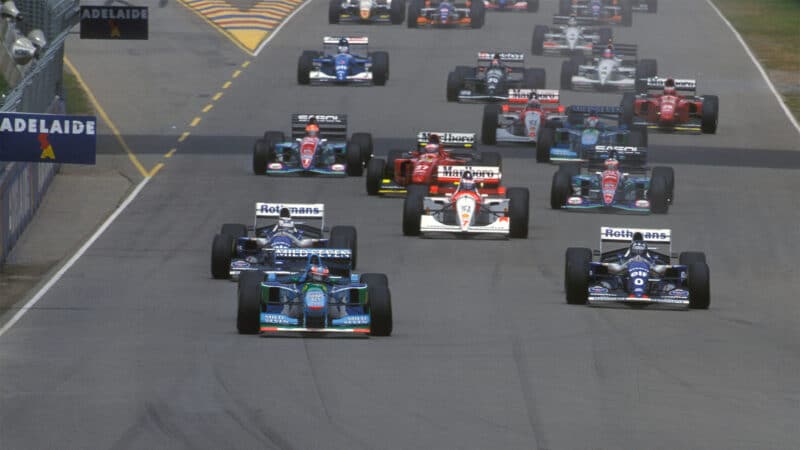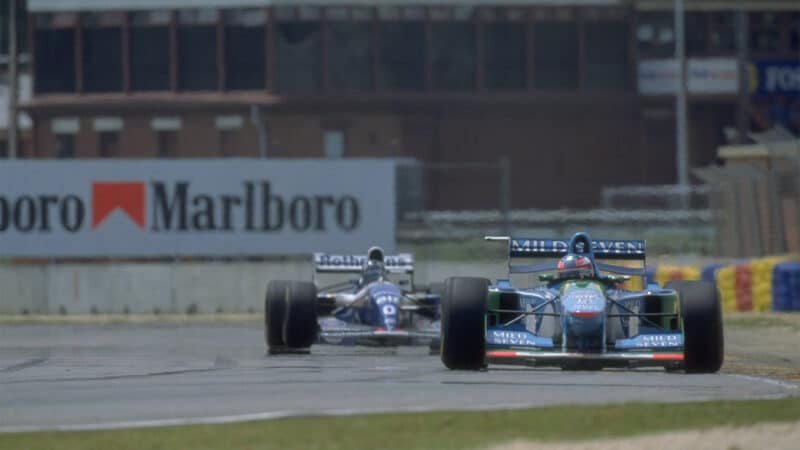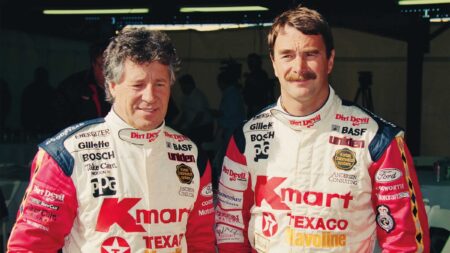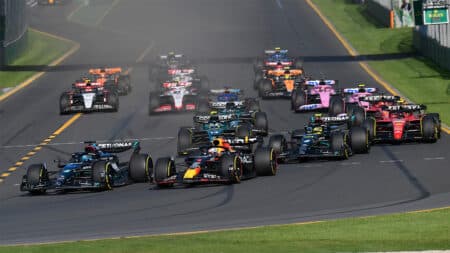Mansell’s return began with two retirements. But an impressive fourth-place finish at Suzuka hinted that ‘Our Nige’ was still among the best. His performance in Australia confirmed it.
In qualifying, Mansell snagged pole position from Schumacher by less than a hundredth of a second, while team-mate Hill grabbed third.
As the grid formed and the lights went out for the following day’s Grand Prix, the lead Williams was slow away, allowing the two championship protagonists to lead the field before Turn 1. Later on the opening lap, Mansell made a mistake at Turn 5 — similar to the one that Schumacher would make 35 laps later — and tumbled further down the order behind Mika Hakkinen in third and Rubens Barrichello in fourth.

A slow start for Mansell allows Schumacher and Hill to slip through
Grand Prix Photo
While the leaders drew away, Mansell found himself among a tightly contested trailing pack, composed of Hakkinen and Barrichello ahead while Jean Alesi, Eddie Irvine, Martin Brundle and Johnny Herbert lurked behind.
Mansell eventually passed Barrichello for fourth and Hakkinen for third — which made him the lead beneficiary of the Schumacher and Hill crash.
But Mansell still had work to do, as the Ferrari of Gerhard Berger was in hot pursuit, having passed Hakkinen and Barrichello after they received stop-go penalties. With one final pitstop to negotiate, Mansell’s fairytale return to motor sport’s top flight was still far from secure.

Mansell leads at Adelaide
Grand Prix Photo
While scenes of celebration erupted from the Benetton garage as Schumacher returned to celebrate his world title triumph, Mansell pitted for the final time on lap 54. He rejoined the track 19 seconds behind the new leader, Berger, but the Austrian soon pitted for fresh tyres of his own, and came out 4.7sec ahead of Mansell’s charging Williams.
A brilliant cat-and-mouse battle ensued over the Grand Prix’s closing stages, as Mansell’s numerous attempts to pass the Ferrari ahead were repelled one after the next. But finally Berger reached breaking point: running wide at Brewery Bend, Turn 10, on lap 64 and falling behind Mansell as he returned to the circuit.




